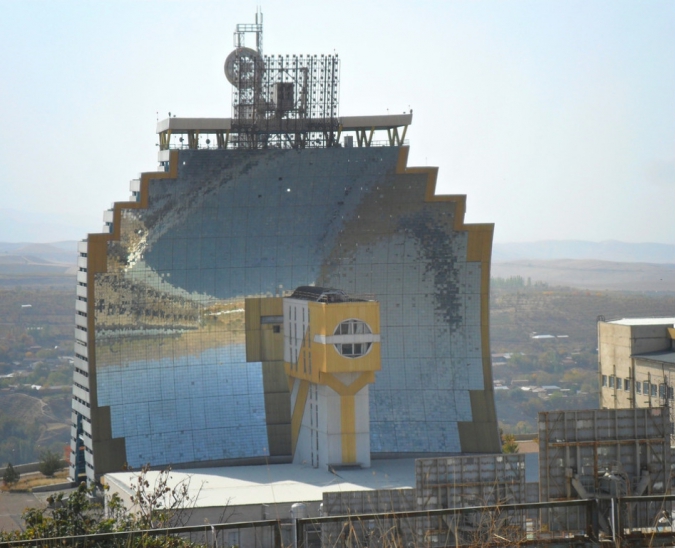
Inter-cluster cooperation will lead to the creation of the first cluster in Uzbekistan, which will be called Sunroad. The cluster will be chaired by Shavkat Nurmatov, who is currently in Hungary to strengthen inter-cluster cooperation and to raise the profile of the cluster in the inter-regional arena.
Uzbekistan's solar furnace was built in 1981 and is located 45 km from the city of Tashkent. The furnace is the largest in Asia. It uses a curved mirror, or an array of mirrors acting as a parabolic reflector, which can reach temperatures of up to 3000 degrees Celsius. The solar furnace in Uzbekistan can be visited by anyone interested in solar energy who would like to see its distinctive design.
The heat produced by the solar furnace is considered to be very clean and free of pollutants. This energy can be used in a variety of ways, such as for hydrogen fuel production, foundry applications and high temperature testing. The Uzbek solar furnace is sometimes referred to as Uzbekistan's Solar Institute. The furnace is a complex optical and mechanical design with 63 flat mirrors that are automatically controlled to track the sun in a uniform pattern and direct the sun's thermal energy towards the crucible. The furnace was first opened in May 1981 and is located 1100 metres above sea level. The furnace occupies a vast area in the mountains and consists of 4 complex components: the main building of the "Uzbekistan Solar Furnace", the heliostatic field, the concentrator and the production tower. The Uzbekistan Solar Furnace was commissioned in 6 years, which means that it was built between 1981 and 1987. The location of the Uzbek solar furnace was carefully chosen because the sun shines 270 days a year. The diameter of the small solar furnace in the complex is 2 metres. The heliostatic field of the solar furnace in Uzbekistan currently consists of some 62 heliostats, arranged in a staggered sequence. The field uses a total of 12090 mirrors and is the largest concentrator in the world with an area of 1849 square metres. The concentrator in the furnace uses 10 700 mirrors and the southern part of the concentrator is covered by special awnings. The Uzbek solar furnace is controlled by staff from a laboratory on the 6th floor, with the observation point located at the highest point.
The Uzbek solar furnace is located in the city of Parkent in the Tashkent region, Republic of Uzbekistan.
